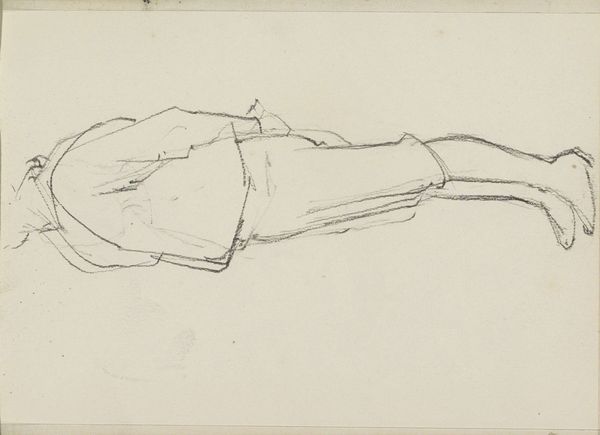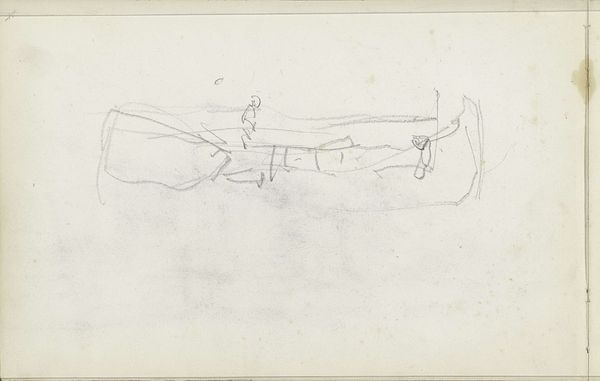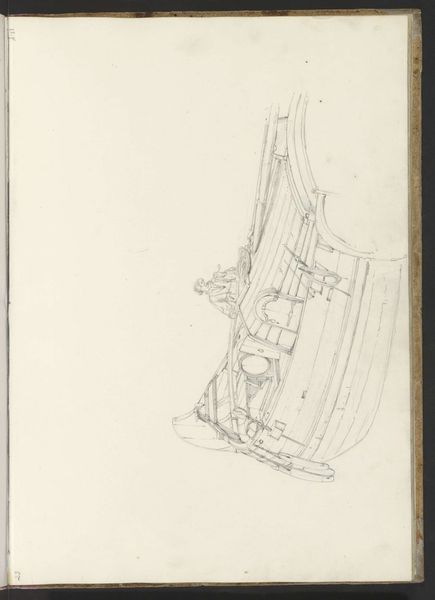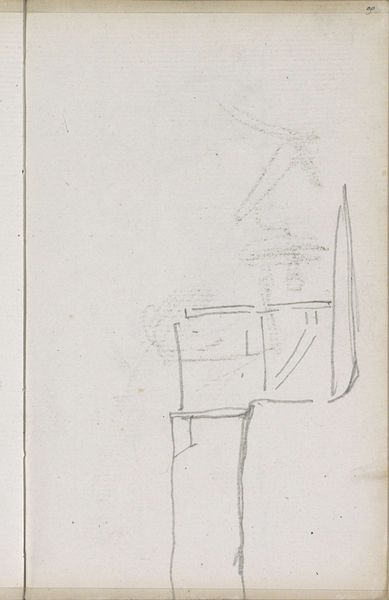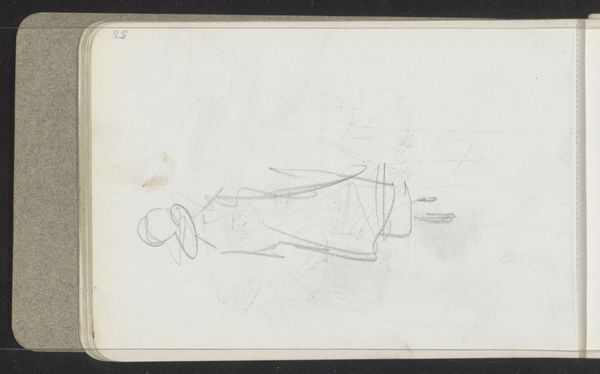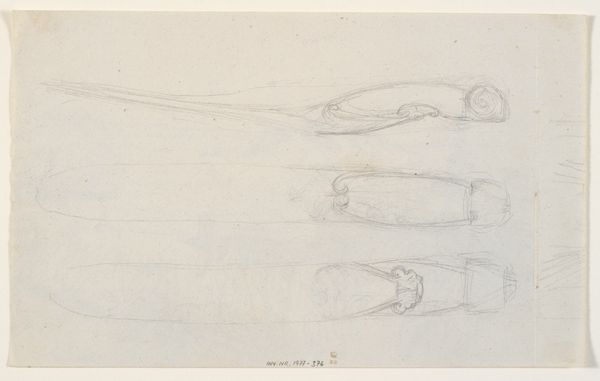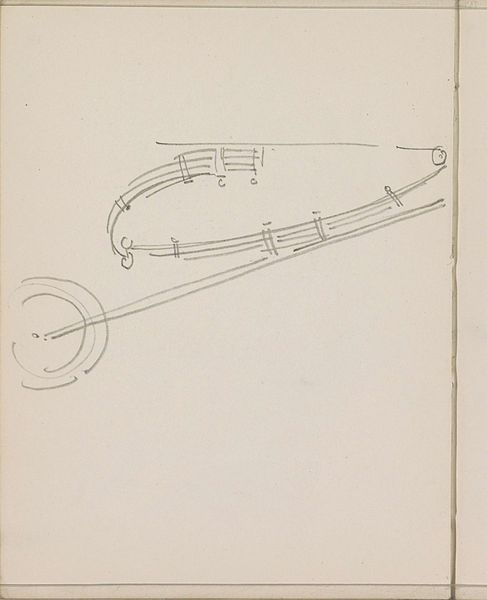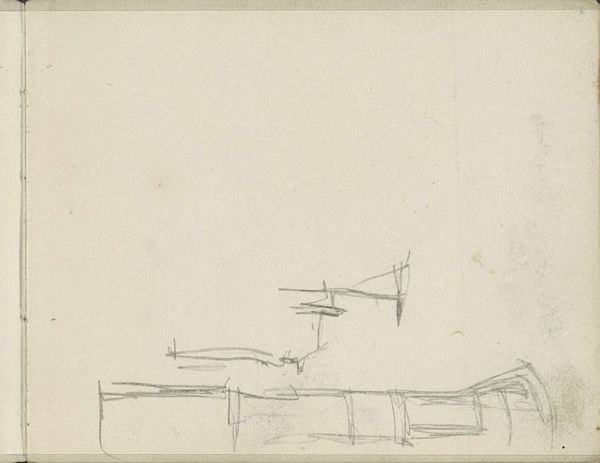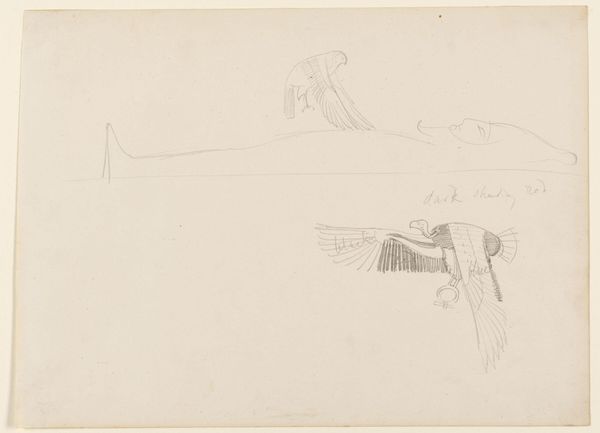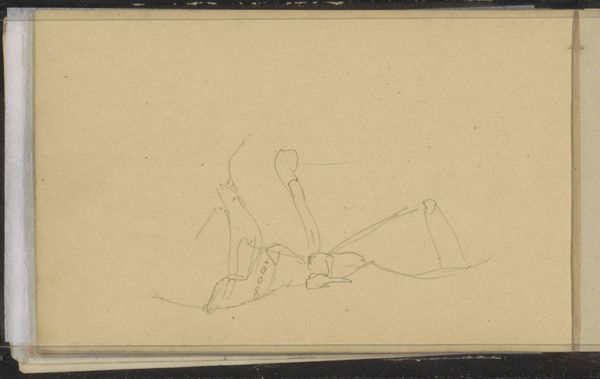
drawing, pencil, graphite
#
drawing
#
amateur sketch
#
light pencil work
#
pencil sketch
#
sketched
#
incomplete sketchy
#
hand drawn type
#
personal sketchbook
#
idea generation sketch
#
pencil
#
graphite
#
sketchbook drawing
#
realism
#
initial sketch
Copyright: Rijks Museum: Open Domain
Curator: Here we have a sketch titled "Bassethoorn," likely created sometime between 1865 and 1913 by Bramine Hubrecht. It's currently held in the collection of the Rijksmuseum. My first impression is how sparse it is, just a very light rendering in graphite on paper. Editor: It does feel almost spectral, doesn't it? More an idea of an instrument than a faithful depiction. Given that this instrument dates from this era, what function would the instrument fulfill in society? Curator: The basset horn occupied a rather niche space within musical society. While composers like Mozart featured it prominently, it never quite achieved the widespread popularity of the clarinet. It would likely have been a more valued member of private orchestras. Its manufacture wasn’t as standardized. It had a slightly different quality to its production. Editor: Right. Looking closely, you can really see the marks of the artist grappling with form, the repetitive lines searching for the right curve of the bell, or the placement of the keys. There’s a palpable sense of labor here. I’m intrigued by how something seemingly so fragile – a preliminary sketch – ends up in a collection like the Rijksmuseum. It's interesting how institutions define "art". Curator: Indeed! This raises an important point. Sketchbooks often provide intimate insights into the artist's process, their preliminary explorations, and their thinking. By showcasing them, we’re actively democratizing the idea of artistic creation. And more and more we celebrate amateur sketch art. Editor: Agreed. It collapses hierarchies between "high art" and the more humble practice of sketching, illuminating the relationship between artistic labor, skill, and even the value that’s assigned to it later on. Curator: Ultimately, this seemingly simple drawing of a basset horn offers us a window into the intersection of artistic practice, material culture, and the evolving role of museums in shaping our understanding of art and the people that create it. Editor: I leave this looking and wondering who the artisan of the Bassethoorn might have been, their labor made spectral as its rendering here in graphite pencil on paper offers both homage and study to its form and sound, and both visible and invisible hands whose work this object memorializes and remembers.
Comments
No comments
Be the first to comment and join the conversation on the ultimate creative platform.
